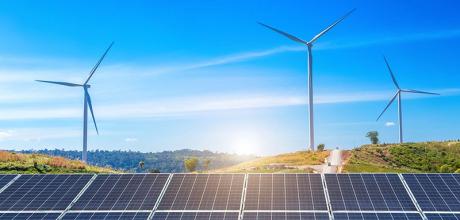How it works - green electricity
As we've pointed out previously, the benefits of electric power for transport hinges significantly on how green the electricity is when vehicles are charged. Some electricity suppliers claim to supply only renewable “zero carbon” electricity, where they “buy” green electricity on the wholesale market. But there isn't an inexhaustible supply of “green” zero carbon electricity waiting to be bought, or “green” generating capacity standing by to meet demand, so your purchase of zero carbon energy inevitably deprives some other user of the green proportion of their mixed origin supply. For a national picture, we have to look at how “green” the UK National Grid is, at any given time of the day, week, or month, to judge how green any EV will truly be in use. The origins of your charging electricity are critical in many ways, particularly the time of day, or day of the week, since the “green” credentials of grid electricity changes significantly with those factors, and with weather.
At the time of writing, on a breezy Wednesday morning, at 11.25, the UK electricity distributed by National Grid is composed of 45% from wind power, under 15% from nuclear power, and around 25% from gas-fired power stations; the remainder is supplied by solar energy, biomass combustion, and some imported power. That's typical of a windy day, and it brings the benefits of an overall source mix that makes every kilowatt hour on average equivalent to the emissions of 125 grams of CO2.
Putting that into perspective, the average figure for all of year 2020 was around 180g/kWh, for 2016 it was 275g/kWh, and for 2012 it was 516g/kWh. On any Sunday, with the same weather, the figures would be lower still. That shows the stunning progress of the “greening” of UK electricity brought about in recent years, primarily by eliminating significant amounts of coal-generated power, rated at 800g/kWh, and natural gas rated at 500g/kWh. Putting this 125g/kWh figure into perspective, at a typical 3 to 4 miles of driving per kWh, it means the real-life emissions of any electric vehicle charged at optimum times are around just 25 to 30 g/km CO2. On another windless day though, the 24-hour average might be up at 250g/kWh, with an EV charged on that day emitting the equivalent of 50 to 60g/km for CO2. Focusing on time of day though, we can highlight times during windy nights when grid generated electricity's carbon count falls well below 100g/kWh, and even as little as 50g/kWh.
Generating suppliers are then often paid to shut down their equipment to balance supply and demand. If we could fully use all that green capacity for EV charging, when it was available, and/or use it to store low-carbon electricity, it would be the icing on the cake. Doing that is easier said than done, but one of the answers is to use it to generate “green” hydrogen… but that's another story. Looking at the other extreme, visualising someone plugging an EV into a rapid charger on an overcast and windless day, the effective carbon count of the electricity going into that EV battery could be as much as six times that of the other EV being charged overnight on a windy night. If enough EV drivers all plug in at 1pm for their lunch break, or when arriving home at 6pm, the National Grid's response may involve the start-up of additional natural gas generating units, creating electricity with a footprint of as much as 550g/kWh. In the least favourable circumstances, not impossible if we become short of natural gas supplies, a coal-fired power station might need to be brought online. That would supply grid electricity with a carbon count of a terrifying 800g CO2 per kWh, equating to EV emissions of 125g/km – just as “dirty” as a medium-sized 2.0-litre turbodiesel car achieving 60mpg. Yet “on paper” and for taxation purposes, the EV is “zero carbon”. How crazy is that?
It's worth bearing all this in mind when getting carried away by the claimed green credentials of zero carbon EVs, and particularly when demands are made for thousands of new rapid charging facilities. They will inevitably create vastly greater emissions than electric vehicles that are charged overnight at home. There's arguably very good justification for surcharging those who insist on using peak demand daytime charging electricity, not as any form of punishment, but as a reflection of the real-life ecological consequences, which are by no means as rosy as they are often presented.


